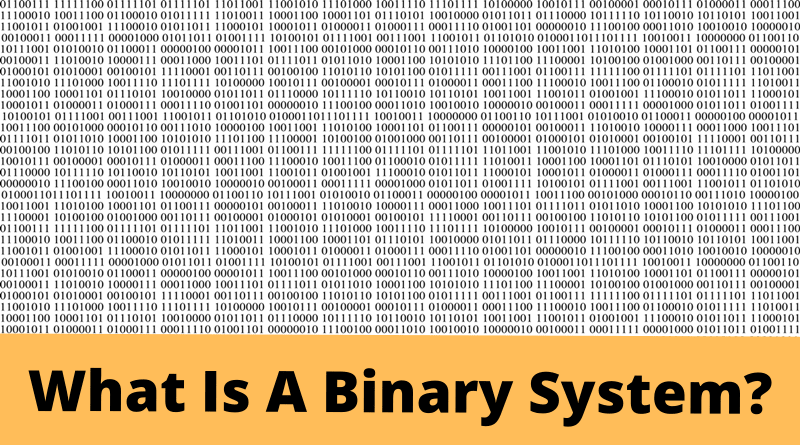What Is A Binary System?
In the memory of a computer, data and program code are represented as a sequence of numbers 0 and 1. This is possible because the basic electronic elements of microchips can usually only assume two stable states – “Yes” or “No”, “On” or “Off”. So that electronic states and signals can be clearly interpreted as information, they are coded with numbers 0 and 1.
What is binary system?
A binary system, also called a dual system, knows only two states and thus only uses two digits 0 and 1 to represent numbers. Each digit of a binary number or binary sequence is called a bit. In the memory of electronic devices and when transmitting data, bits are divided into groups of eight bits for compact representation. A group of 8 consecutive bits is called a byte or octet.
In addition to the well-known number systems decimal and binary, there are also other number systems such as hexadecimal and octal, which are used in computer science, digital technology, and data communication. Number systems differ from one another according to the underlying base number. The base number (the base) of a number system is equal to the total number of all possible digits that the number system uses.
The most commonly used positional number systems in computer science are:
- The decimal system: digits from 0 to 9; base 10.
- The binary system: digits 0 and 1; base 2
- The octal system: digits 0, 1, …,7; base 8
- The hexadecimal system: digits 0, 1, …, 9, A, B, C, D, E, F; base 16
In positional number systems, each position of a number has its own value or weight. If we denote the base of a positional number system as B and number the positions of an N-digit number from right to left with indices 0, 1, 2, …, (N-1), the first (right) position of the number has the smallest weight of B ^ 0, the second position has the weight B ^ 1, the third B ^ 2, the fourth B ^ 3, etc. The last (left) position of the number has the largest weight of B ^ (N-1).
You can calculate the value of a number by multiplying each digit by the value of its position and adding the calculated values together:
Digit_Position_0 x Weight_Position_0 + Digit_Position_1 x Weight_Position_1 + Digit_Position_2 x Weight_Position_2 + Digit_Position_3 x Weight_Position_3 + ...
If you apply this general rule to a decimal number, for example 128, from right to left, you get the following result:
8x(10^0) + 2x(10^1) + 1x(10^2) = 8x1 + 2x10 + 1x100 = 8 + 20 + 100 = 128 (dec)
How does a binary system work in computer science?
To calculate the decimal value of a binary number, you can use the same rule. The decimal value of a binary number, such as 1011 (bin), is calculated as follows:
1011 (bin) = Digit_Position_0 x Weight_Position_0 + Digit_Position_1 x Weight_Position_1 + Digit_Position_2 x Weight_Position_2 + Digit_Position_3 x Weight_Position_3 = 1 x (2 ^ 0) + 1 x (2 ^ 1) + 0 x (2 ^ 2) + 1 x (2 ^ 3) = 1x1 + 1x2 + 0 + 1x8 = 11 (dec)
What are the advantages of the binary number system
Binary system is often used. This is a universal language of IT and communication technologies in the processing and transmission of data, as well as an interdisciplinary technical language that professionals in the digital era use when they talk to technology. In order for information to be presented efficiently, it must be efficiently coded in basic electronic elements. It is easier to make an electronic element that can only be in two stable states (e.g. there is a current or no current). The use of the binary system has been found to be most effective in electronic circuits because the numbers 0 and 1 can be encoded with two different voltage levels. Efficiency is one of the main reasons why so much attention is paid to the binary system.
The binary system only needs two digits to represent any number of any size. States of electronic basic elements and signals of electronic components that are processed in information technology and sent in digital communication can also be represented either with two binary numbers 0 and 1 (elementary states) or as sequences of binary numbers (data). This approach makes it possible to build, integrate, and program efficient, cost-effective components.
The disadvantage of the binary system
A disadvantage of the binary system is that a lot more digits are required to code a large binary number or a long binary number sequence. In order to be able to represent large binary numbers compactly, for example in computer programs, information systems, or when analyzing network packets, binary numbers are often presented as equivalent decimal, hexadecimal or octal numbers. You simply choose a number system that suits you best for describing and solving a specific task.
Binary number systems in ancient eras and cultures
Number systems related to binary numbers were known thousands of years ago in various ancient cultures such as ancient Egypt, China, and India. 2500 years before Christ, a mysterious inscription was created in China, which can only be fully and logically explained using the binary system. It consists of a series of long and short lines. If we assume that the long line means 1 and the short line means 0, then the entire inscription is just a series of natural binary numbers that only get meaningful with the logic of a binary system.
In 1697 Leibniz described a binary number system that can be used for scientific purposes. Leibniz considered the binary number system to be simple and beautiful and said that this number system was of fundamental importance to science and led to new discoveries. “If you reduce the numbers to the simplest beginnings like 0 and 1, the wonderful appears everywhere,” says Leibnitz. In 1936 Konrad Zuse built the first program-controlled digital computer. In 1945 John von Neumann described the architectural concept of a modern calculating machine in which a binary number system is used.
Conclusion
The binary number system is the basis of modern digital technologies not only in information technology but also in industry. Areas of application of the binary system are diverse and include computer science, mathematics, mathematical logic, electronics and mechatronics, communication, and networks. Modern machines and automats are also IT-capable and cannot function without binary logic in processors, sensors, and digital control elements. The binary system, which was also known in ancient civilizations, is a universal means that enables digitalization and connects people, computers, smart devices, and industrial technologies in the modern digital world.





